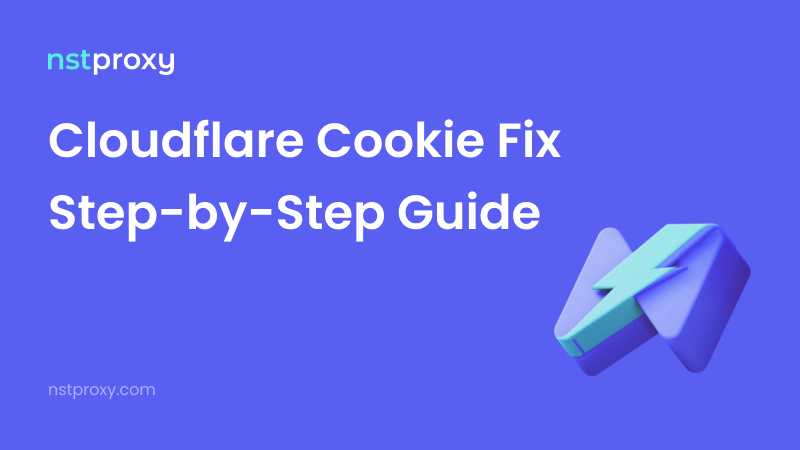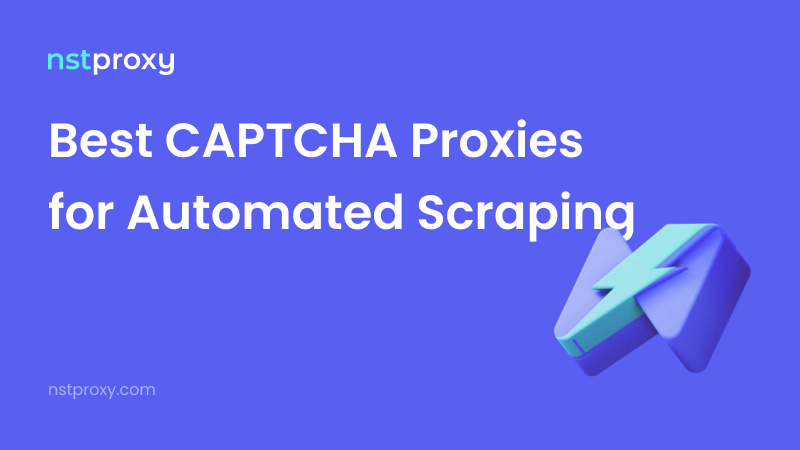Maintaining a stable session is crucial when accessing Cloudflare-protected websites. Many users assume that as long as the sessionId remains the same, their IP address will also stay consistent. However, this is not always the case—especially when using a proxy gateway with load balancing based on client location.
This article explains why identical session IDs may lead to different IP addresses, how Cloudflare handles IP consistency during challenges, and the correct configuration to ensure Cloudflare cookies remain valid.
Why Does the Same Session ID Produce Different IPs?
Some proxy providers operate multiple gateway regions (e.g., US, EU, APAC) and use dynamic routing to allocate traffic based on the client's geographical location. This means:
- The same session ID may be routed to different regional gateways
- Each gateway maintains independent caching and session storage
- The resulting public exit IP can vary, depending on where the request originates
A Typical Scenario
Consider a real-world Cloudflare challenge flow:
A user in Germany is developing locally and needs to solve Cloudflare’s 5-second security challenge (cf_challenge). To automate this, they use a third-party challenge solver — Capsolver — to obtain Cloudflare cookies.
In this setup:
- Capsolver infrastructure is located in the United States
- The user’s development environment is in Germany
- Both parties connect through
gate.nstproxy.iowith the same sessionId
Expected Behavior
The user assumes:
“If the sessionId and gateway name are identical, Cloudflare should treat both requests as from the same source.”
Actual Behavior
Due to dynamic routing based on requester geography:
- Capsolver’s request exits through a US IP (e.g.,
104.26.x.x) - The user’s request exits through an EU IP (e.g.,
172.67.x.x)
Although:
- Same sessionId ✅
- Same gateway domain ✅
The exit IP changes ⛔
Cloudflare Validation Result
Cloudflare checks the cookie and detects:
- Cookie was issued to IP A (US)
- Current request comes from IP B (EU)
Cloudflare concludes:
“This is not the same requester.”
Result:
Cloudflare cookie invalid
New challenge triggered
Session continuity brokenThis mismatch happens even though the gateway and session ID are identical, because the load-balanced gateway does not guarantee the same exit region and IP.
How Cloudflare Handles This
Cloudflare assigns security risk at the IP level.
When a challenge is solved by an IP, Cloudflare generates a cookie binding:
- IP Address
- Session Token
- Device Risk Fingerprint
If subsequent requests include the same session cookie but from a different IP, Cloudflare rejects the session and triggers a new challenge.
Example result:
HTTP 403 Forbidden
Cloudflare challenge re-triggered
Cloudflare cookie invalidTherefore, IP consistency is mandatory for Cloudflare-protected requests.
How Nstproxy Ensures IP Consistency
To address Cloudflare’s strict IP‑bound session validation, Nstproxy provides:
- Dedicated regional gateways to maintain a stable exit IP
- Automatic session retention for Cloudflare challenge pass‑through success
- Enterprise‑grade reliability with 99.9% uptime
- Real residential & ISP IPs that minimize Cloudflare risk scoring
- Global coverage including US / EU / APAC regions
- Flexible integration options: Scraping Browser, API, HTTP/SOCKS5
These features ensure that once Cloudflare authorizes a session, all subsequent requests originate from the same IP — preventing cookie invalidation.
Common Gateway Types and Impact
| Gateway Type | Routing Logic | IP Stability | Cloudflare Compatibility |
|---|---|---|---|
Region-specific gateway (e.g. gw-us.nstproxy.io) |
Fixed region assignment | High | Compatible |
Auto-routing gateway (e.g. gate.nstproxy.io) |
Based on client IP location | Low | Likely to fail |
| Third-party proxy random gateway | Random vendor allocation | Very low | Frequently fails |
If the proxy is dynamically assigned by region or vendor, the public IP used to solve Cloudflare may not match the one used when reusing the cookie.
Real User Case Summary
A customer reported:
-
Cloudflare 5-second challenge could be passed using fixed-region gateways:
gw-eu.nstproxy.iogw-us.nstproxy.iogw-ap.nstproxy.io
-
Using
gate.nstproxy.iocaused challenge failure even with the same session ID
The root cause:
The gateway dispatches traffic based on client location.
Server-side IP ≠ Local machine IP.
Cloudflare sees mismatched IP for the same cookie.
As confirmed during testing:
Session storage is independent across regional gateways.
Load balancing does not share session cache.
Recommended Solution
To maintain Cloudflare session validity, ensure:
✅ Use region-specific Nstproxy gateway:
gw-us.nstproxy.io(United States)gw-eu.nstproxy.io(Europe)gw-ap.nstproxy.io(Asia-Pacific)
✅ Keep all Cloudflare-related requests in the same region
✅ Avoid auto-routing gateways for authenticated sessions
✅ Ensure server and local debugging both route consistently
If unsure, route traffic through a fixed proxy management relay so that origin is unified before reaching our gateway.
Key Takeaways
- Session ID alone does not guarantee IP persistence
- Cloudflare cookies are IP-bound for anti-bot security
- Load-balancing gateways cause IP mismatches
- Choose fixed-region gateways for Cloudflare bypass stability
If you are experiencing Cloudflare cookie issues, the gateway routing strategy is very likely the cause.
Conclusion
Using a dynamically dispatched proxy gateway can lead to different exit IPs, which invalidates Cloudflare challenge cookies. For high-security, Cloudflare-protected environments, maintaining a stable IP across all requests is essential.
Nstproxy recommends using region-specific gateways when interacting with Cloudflare websites to ensure successful authentication and session continuity.
If you need assistance selecting the correct gateway setup for your environment, please contact our technical support team.
Optimize Cloudflare Performance with Nstproxy
Nstproxy provides high‑reliability proxy infrastructure designed for anti‑bot protected environments such as Cloudflare, Akamai, PerimeterX, and DataDome.
Why choose Nstproxy for Cloudflare‑protected targets:
- Dedicated regional gateways ensure IP consistency
- Automatic session retention for Cloudflare challenge pass‑through
- Enterprise‑grade stability with 99.9% uptime
- Global IP coverage across US/EU/APAC and more
- Real residential & ISP IPs to reduce CAPTCHA and challenge triggers
- Flexible integration: scraping browser, API, HTTP/SOCKS5
Best Practices for Cloudflare
✅ Always choose a stable region gateway (gw-us, gw-eu, gw-ap)
✅ Maintain the same exit IP for session reuse
✅ Prefer ISP or residential IPs for high‑security domains
Start Your Cloudflare‑Safe Proxy Integration
- Contact sales: [email protected]
- Try free credit: https://nstproxy.com
- View documentation: https://docs.nstproxy.com
Secure your Cloudflare workflows with Nstproxy — high success rate, lower risk, global performance.

